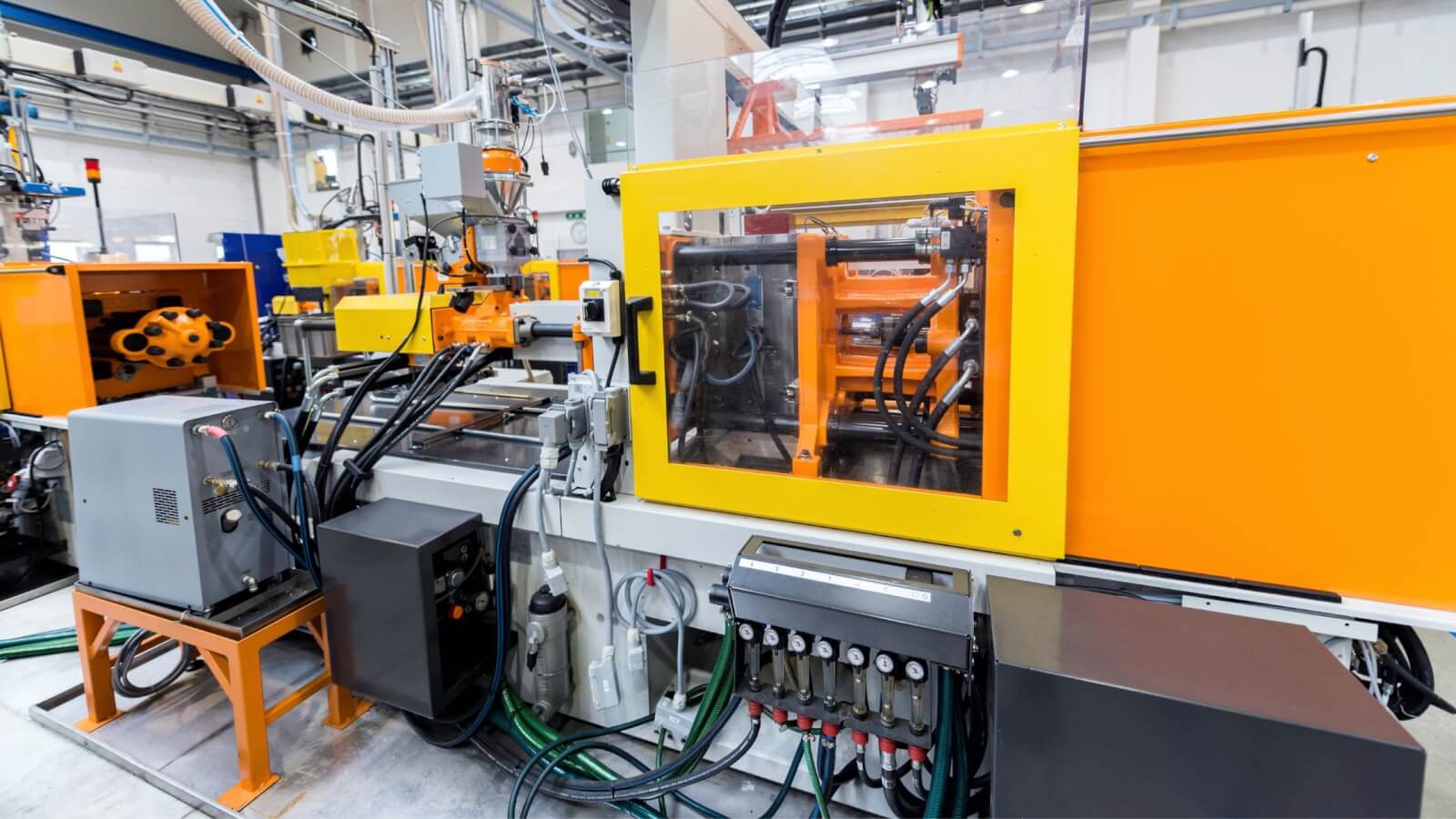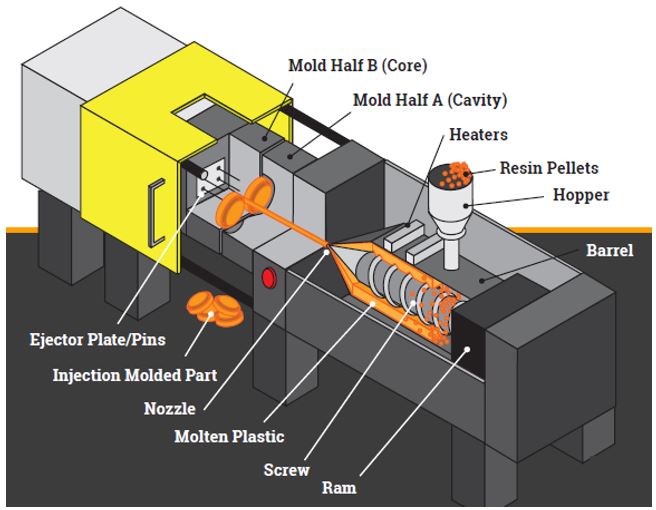Understanding the Plastic Injection Molding Process for High-Quality Production
Understanding the Plastic Injection Molding Process for High-Quality Production
Blog Article
A Comprehensive Guide to the Plastic Injection Molding Modern Technology
Plastic injection molding stands as a foundation of modern-day production, providing unequaled efficiency and precision in the production of complicated plastic elements. As the landscape of producing develops, recognizing the future trajectory of shot molding comes to be progressively imperative.

Overview of Plastic Injection Molding
Plastic injection molding is a commonly used production procedure that allows the efficient manufacturing of complicated plastic get rid of high precision. This technology has come to be a keystone in different industries, consisting of auto, durable goods, and electronic devices, owing to its capability to produce large quantities of components rapidly and cost-effectively.
The process includes melting plastic granules and injecting the molten product right into a pre-designed mold. Once cooled, the mold is eliminated to expose the finished part, characterized by its intricate details and uniformity. The convenience of products made use of in plastic injection molding, ranging from thermoplastics to thermosetting polymers, enables producers to customize items to meet details needs, such as strength, resistance, and versatility to warmth or chemicals.
Moreover, the performance of this method lowers waste and decreases manufacturing expenses, making it an attractive option for businesses aiming to optimize their manufacturing procedures. As technology advances, innovations such as multi-material shot molding and the integration of automation remain to improve the abilities of plastic injection molding, making it possible for the production of significantly advanced products that satisfy the demands of modern-day markets.
The Injection Molding Refine
Shot molding is an innovative production strategy that entails numerous important actions to transform raw plastic materials into ended up products. The procedure starts with the prep work of plastic pellets, which are fed into a heated barrel. Below, the pellets are melted and homogenized to attain a consistent thickness.
When effectively heated up, the liquified plastic is injected into a specifically crafted mold and mildew under high pressure. This action is important, as it enables the material to fill up every dental caries of the mold and mildew, guaranteeing the last item properly shows the designated design. The injection time should be meticulously regulated to stop problems and make sure effective product use.
After the mold is filled up, it goes through a cooling stage, where the plastic strengthens into its final form. This cooling procedure can vary in duration relying on the density and complexity of the part. Once cooled, the mold and mildew opens, and the completed item is expelled.
Key Advantages of This Technology
One of one of the most substantial benefits of shot molding technology exists in its capacity to produce high quantities of specific and consistent parts with marginal waste. This effectiveness stems from the automated nature of the process, which significantly minimizes hands-on labor and the possibility for human error. Because of this, producers can accomplish a high level of repeatability in their result, guaranteeing that each component fulfills stringent quality requirements.
An additional trick benefit is the flexibility of materials that can be made use of in injection molding. navigate to these guys A variety of thermoplastics and thermosetting polymers can be formed, permitting tailored buildings to suit particular applications. Additionally, the innovation sustains intricate designs and complex geometries, which can be testing to achieve with various other making techniques.
The first investment in mold and mildews might be high, but the lasting cost savings in product waste and labor make shot molding a financially practical alternative. These advantages strengthen shot molding's placement as a recommended manufacturing procedure throughout numerous markets - Plastic Injection Molding.
Applications Throughout Industries

In the medical field, injection molding is vital for making top notch, clean and sterile parts, including syringes, surgical instruments, and housings for clinical devices. The capability to maintain tight resistances and produce intricate geometries makes it an excellent option for these applications. The product packaging sector benefits from shot molding by creating a vast range of containers, closures, and dispensers that are both cost-effective and reliable.
The toy industry relies greatly on shot molding to produce vivid, durable, and safe products that interest kids. Lastly, the building and construction sector makes use of injection molding for producing various fixtures, installations, and components that add to both functionality and style. Generally, the broad selection of applications shows the integral duty of shot molding technology ahead of time various industries.
Future Trends in Injection Molding
Accepting improvements in modern technology, the future of injection molding is positioned for considerable improvement driven by innovations in products, automation, and lasting practices. One of one of the most remarkable trends is the development of recycled and bio-based polymers, which not just decrease dependence on fossil fuels yet likewise lessen environmental impact. As producers progressively prioritize environmentally friendly services, these products are ending up being extra common in production.
Automation is one more crucial fad forming the market. The assimilation of robotics and fabricated intelligence right into the shot molding process enhances precision, efficiency, and production rate. Smart manufacturing facilities furnished with IoT devices permit for real-time tracking and predictive maintenance, minimizing downtime and enhancing functional processes.
Additionally, the change in the direction of customized and small-batch production is obtaining energy. Advanced modern technologies such as 3D printing and additive production make it possible for quick prototyping and the creation of complex geometries that were previously unattainable. This shift allows business to react better to market needs and customer choices.
Conclusion
In conclusion, plastic injection molding modern technology stands for a foundation of modern production, supplying effectiveness and flexibility in creating intricate components throughout varied industries. The comprehensive assessment of the injection molding procedure highlights its essential phases and advantages, while the exploration of applications emphasizes its prevalent importance.
Plastic shot molding stands as a keystone of modern manufacturing, supplying unrivaled efficiency and precision in the manufacturing of complicated plastic components (Plastic Injection Molding). The versatility of materials utilized in plastic injection molding, varying from thermoplastics to thermosetting polymers, allows producers to customize items to meet specific requirements, such as flexibility, resistance, and strength to warmth or chemicals
Shot molding is an innovative manufacturing strategy that entails several vital actions to transform raw plastic products right into completed items.The flexibility and website link performance of shot molding technology have led to its widespread adoption throughout countless industries.In verdict, plastic shot molding innovation stands for a keystone of modern-day production, offering performance and versatility in producing complicated components across varied markets.
Report this page